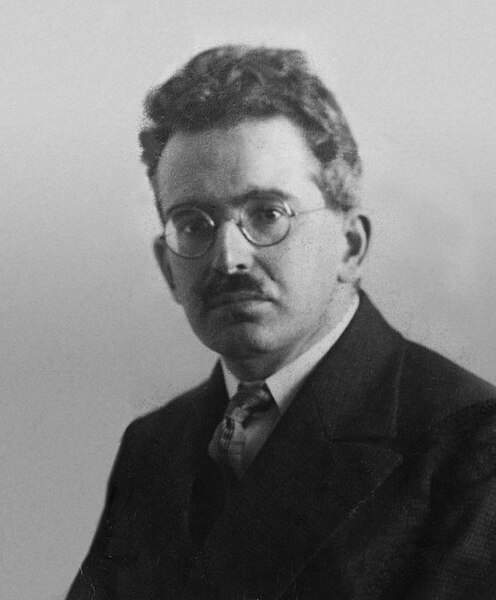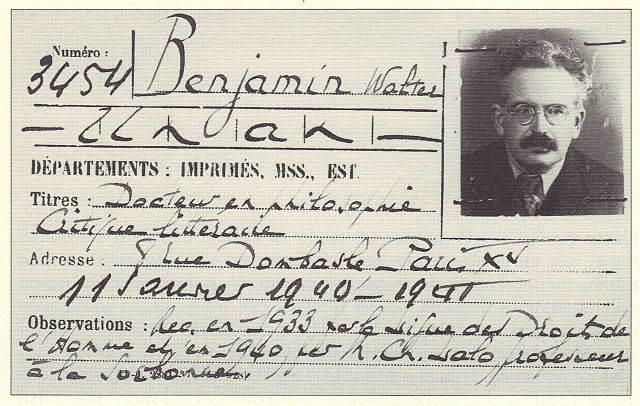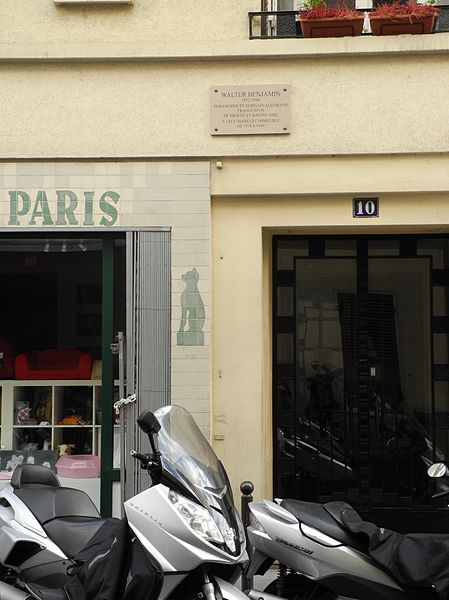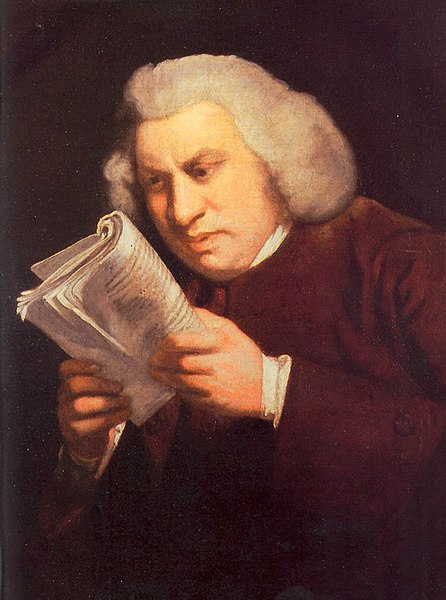Walter Bendix Schönflies Benjamin was a German Jewish philosopher, cultural critic, media theorist, and essayist. An eclectic thinker who combined elements of German idealism, Romanticism, Western Marxism, Jewish mysticism, and Neo-Kantianism, Benjamin made influential contributions to aesthetic theory, literary criticism, and historical materialism. He was associated with the Frankfurt School and also maintained formative friendships with thinkers such as playwright Bertolt Brecht and Kabbalah scholar Gershom Scholem. He was related to German political theorist and philosopher Hannah Arendt through her first marriage to Benjamin's cousin Günther Anders, though the friendship between Arendt and Benjamin outlasted her marriage to Anders. Both Arendt and Anders were students of Martin Heidegger, whom Benjamin considered a nemesis.
Benjamin in 1928
Walter Benjamin's membership card for the Bibliothèque nationale de France (1940)
Walter Benjamin's Paris apartment at 10 rue Dombasle (1938–1940)
Walter Benjamin's grave in Portbou. The epitaph in German, repeated in Catalan, quotes from Section 7 of "Theses on the Philosophy of History": "There is no document of culture which is not at the same time a document of barbarism"
A genre of arts criticism, literary criticism or literary studies is the study, evaluation, and interpretation of literature. Modern literary criticism is often influenced by literary theory, which is the philosophical analysis of literature's goals and methods. Although the two activities are closely related, literary critics are not always, and have not always been, theorists.
Samuel Johnson, one of the most influential writers and critics of the 18th century. See: Samuel Johnson's literary criticism.





